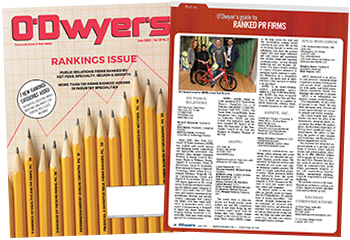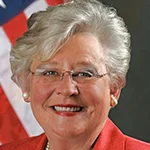 Christine Barney Christine Barney |
For communications professionals, a silver lining to the COVID-19 pandemic is that it brought an abrupt end to the acceptance of mediocrity. When, overnight, your company must cull 75 percent of its workforce or reduce expenses by half, it becomes suddenly much easier to distinguish between excellence and everything else.
The questions ask themselves: “Is this person really performing well? Do I need this particular technology tool? Is my agency really delivering?”
Communications is an industry that’s ripe with mediocrity. Anyone can hang out a shingle and start offering consulting services. There’s no certification or licensing required and voluntary honorifics like PRSA’s Accredited in Public Relations have barely made a dent in the population of practitioners. (Note, I proudly tag APR after my name and am glad I took the time to earn the designation, but can’t remember a time when it made a difference in whether someone decided to do business with me or work for me.)
Corporations often promote incompetence, take the safer route to avoid failure and measure outputs vs. outcomes. But in our new world of rampant unemployment and uncertainty, the mediocre will not survive.
Mediocrity loses to those trading up
 |
| This article is featured in O'Dwyer's Jun. '20 PR Firm Rankings Magazine. |
Organizations that follow Six Sigma or Top Grading philosophies are comfortable with the idea of categorizing employees as A or B players who are rewarded if they’re in the top 10 percent and expendable if in the bottom 10 percent.
Many organizations are uncomfortable with this “Hunger Games” like approach to weeding out lesser performers, and that’s why so many C players linger and even get promoted. It’s easy to fire those who are terrible. But those who might have a few really strong skills? Or those who are liked by that one client or that one manager? Firing that person is harder, until, of course, you’re forced into the lifeboat and there isn’t enough room for everyone. Suddenly, that decision is a whole lot easier.
So, in the wake of COVID-19, not only did many mediocre people suddenly find themselves cast out, but organizations looking at their people assets now saw an opportunity to trade up. Some very good talent was jettisoned by industries that were decimated. The top digital strategist at a cruise line who last year wanted double what you were willing to pay is now willing to accept 20 percent less than their most recent salary just to find a safe port.
Do you feel like your biz dev person isn’t delivering enough ROI? Play the field. You let people go and then got Paycheck Protection Plan funds and now must get your headcount back up or be penalized on the forgiveness of the loan? Why not invest in hiring to add some new capabilities like a videographer or content creator. If you’re like me, your LinkedIn has exploded with communications people looking to connect. Some who are unemployed, smart stars who are looking for a stronger employer and yes, even the mediocre. My recruiter has never been busier.
The bar just got higher
No matter where you sit in the communications industry, everyone’s demanding more. When resources are scarce, you can’t afford to keep mediocre performers. Say you have a tool that was supposed to enhance your productivity by 50 percent but delivered only 30 percent. In the past, the argument might be made that, well, 30 percent is still good and the scale would tip toward the easier path of doing nothing versus the more involved steps to make a change.
No one wants to admit they accept average or less, but I believe every organization has a person, tool, or vendor that just isn’t delivering at expected levels and only gets away with it because mediocrity is easy to ignore. However, in today’s new environment, we have permission to be—or in fact, are being forced to be … brutally honest. Now, your first thought is, “do I need this tool at all” and your second is, “can I get a better tool for a better price from someone else?”
The current crisis forced the raising of the bar, but it also brought opportunity and accelerated change. If someone had asked you to put on a virtual conference in 2019, you might have said you needed at least six months to plan. Yet thousands of organizations switched gears with mere weeks of planning to salvage conferences and stay relevant to their audiences. Many of them had no technology platforms, but they went from zero to 60 because they had to. What’s the old expression: what would you do if you knew you couldn’t fail? Well, we’ve just seen what people can do when they know there’s no choice but to act to avoid failure.
Ultimately, it’s clear that mediocrity isn’t a fixed state. Any single person, company or technology can choose to rise above mediocrity with effort, inspiration or perhaps a kick in the pants. Having the bar higher should challenge all of us to improve at every level.
Will mediocrity come back like a weed?
Once this pandemic is no longer top of mind, will we go back to our lazy ways? Maybe, but just like working from home is now a mainstay of many organization—and predictions say lots of these folks will never go back—once you get a taste of realizing the power of eliminating mediocrity, and see the impact on the bottom line, my guess is it will be hard to give that up.
We’ll live in the shadow of COVID-19 for quite a while; we’ll wonder when it will ramp up or mutate or if some other devastating event will come along. The apple cart was upset so quickly, it will be a long time before we feel safe enough to become complacent again.
This residual fear is why I still clip coupons years after I no longer need to. I remembered those times when I had no choice but to watch every penny and each decision was carefully evaluated against that high bar I mentioned earlier.
So, if every action requires you to take a mediocrity test, chances are we in the communications industry will be less willing to fail that test. It will be those with agility, drive and flawless execution who will succeed while the mediocre will be forced to up their game or be watching from the sidelines.
***
Christine Barney is CEO and managing partner of rbb Communications.


 Southern governors claim they know what's best for their working class, and it's not pay raises... A Ukrainian human rights group played a key role in convincing House Speaker Mike Johnson to hold a vote to send arms to Ukraine, Israel and Taiwan... Trump Media & Technology Group blames short-selling and not lousy outlook for its stock slump.
Southern governors claim they know what's best for their working class, and it's not pay raises... A Ukrainian human rights group played a key role in convincing House Speaker Mike Johnson to hold a vote to send arms to Ukraine, Israel and Taiwan... Trump Media & Technology Group blames short-selling and not lousy outlook for its stock slump. The techniques deployed by OJ Simpson's defense team in the 'trial of the century' served as a harbinger for those used by Donald Trump... People worry about the politicization of medical science just as much as they fret about another pandemic, according to Edelman Trust Barometer... Book bans aren't restricted to red states as deep blue Illinois, Connecticut and Maryland challenged at least 100 titles in 2023.
The techniques deployed by OJ Simpson's defense team in the 'trial of the century' served as a harbinger for those used by Donald Trump... People worry about the politicization of medical science just as much as they fret about another pandemic, according to Edelman Trust Barometer... Book bans aren't restricted to red states as deep blue Illinois, Connecticut and Maryland challenged at least 100 titles in 2023. The NBA, which promotes legalized gambling 24/7, seems more than hypocritical for banning player for placing bets... Diocese of Brooklyn promises to issue press release the next time one of its priests is charged with sexual abuse... Truth Social aspires to be one of Donald Trump's iconic American brands, just like Trump University or Trump Steaks or Trump Ice Cubes.
The NBA, which promotes legalized gambling 24/7, seems more than hypocritical for banning player for placing bets... Diocese of Brooklyn promises to issue press release the next time one of its priests is charged with sexual abuse... Truth Social aspires to be one of Donald Trump's iconic American brands, just like Trump University or Trump Steaks or Trump Ice Cubes. Publicis Groupe CEO Arthur Sadoun puts competition on notice... Macy's throws in the towel as it appoints two directors nominated by its unwanted suitor... The Profile in Wimpery Award goes to the Ford Presidential Foundation for stiffing American hero and former Wyoming Congresswoman Liz Cheney.
Publicis Groupe CEO Arthur Sadoun puts competition on notice... Macy's throws in the towel as it appoints two directors nominated by its unwanted suitor... The Profile in Wimpery Award goes to the Ford Presidential Foundation for stiffing American hero and former Wyoming Congresswoman Liz Cheney. JPMorgan Chase chief Jamie Dimon's "letter to shareholders" is a must-read for PR people and others interested in fixing America and living up to its potential... Get ready for the PPE shortage when the next pandemic hits... Nixing Netanyahu. Gaza carnage turns US opinion against Israel's prime minister.
JPMorgan Chase chief Jamie Dimon's "letter to shareholders" is a must-read for PR people and others interested in fixing America and living up to its potential... Get ready for the PPE shortage when the next pandemic hits... Nixing Netanyahu. Gaza carnage turns US opinion against Israel's prime minister.


 Have a comment? Send it to
Have a comment? Send it to 
No comments have been submitted for this story yet.